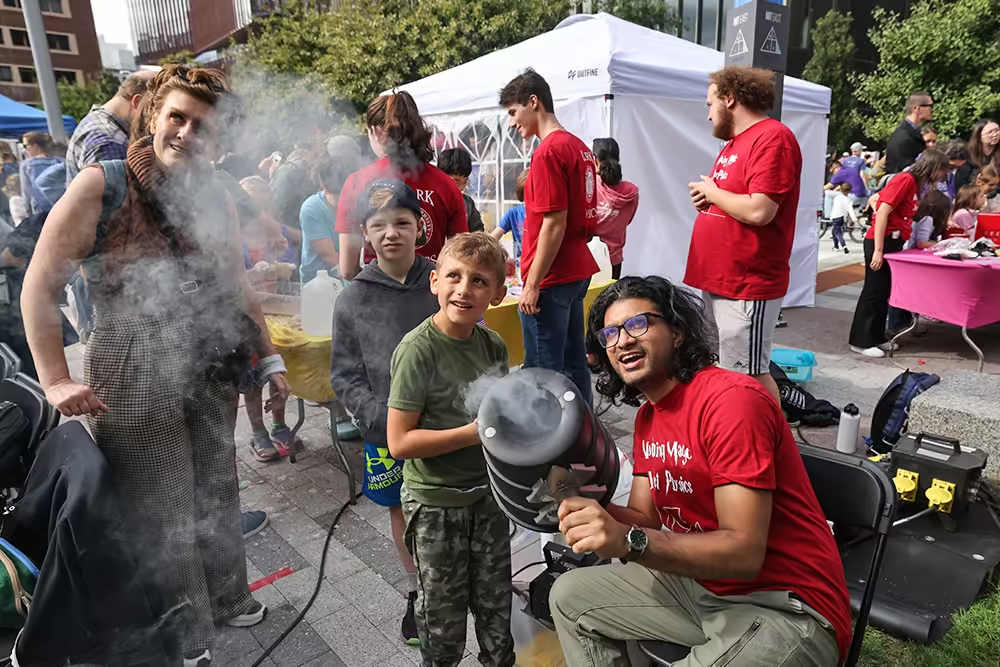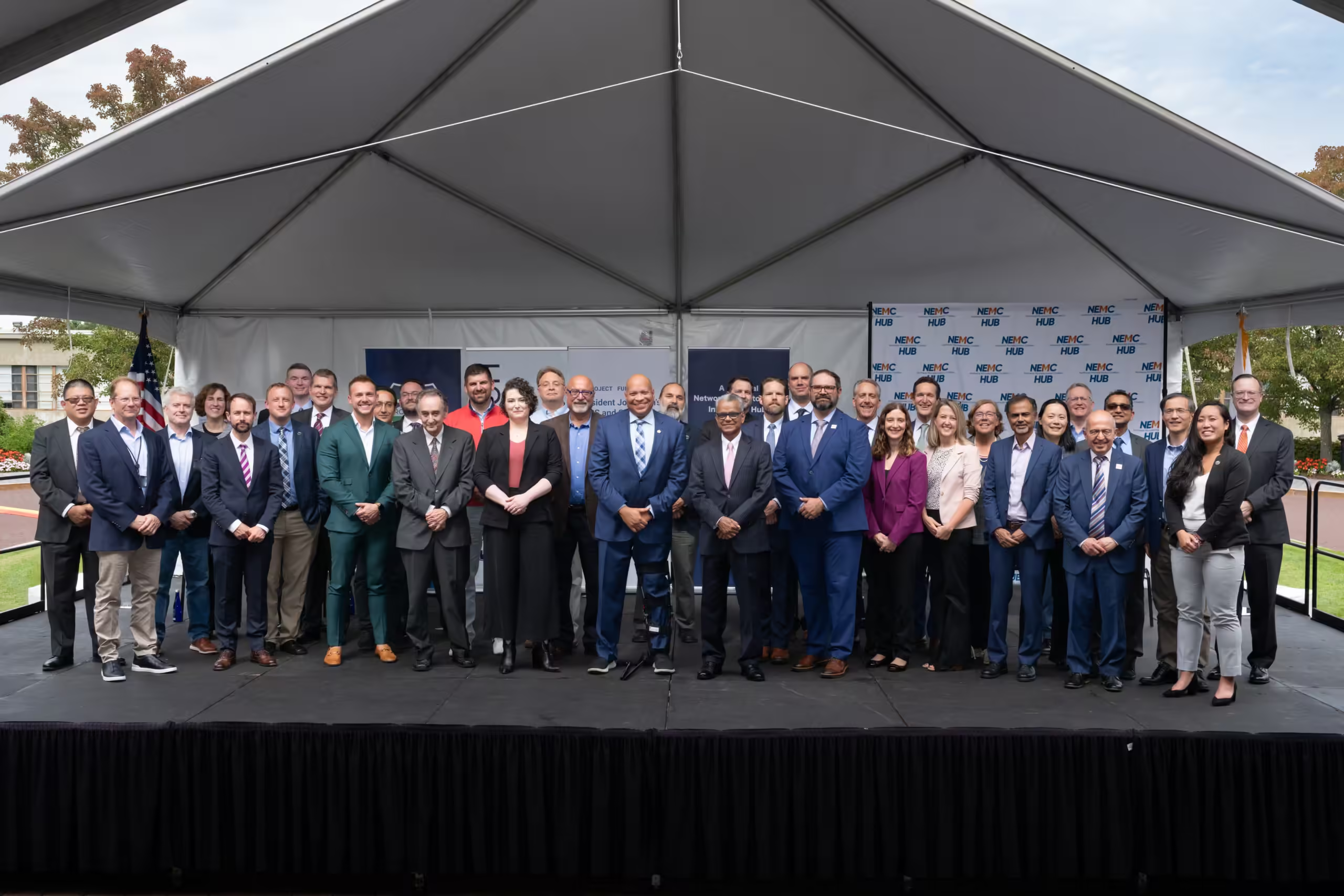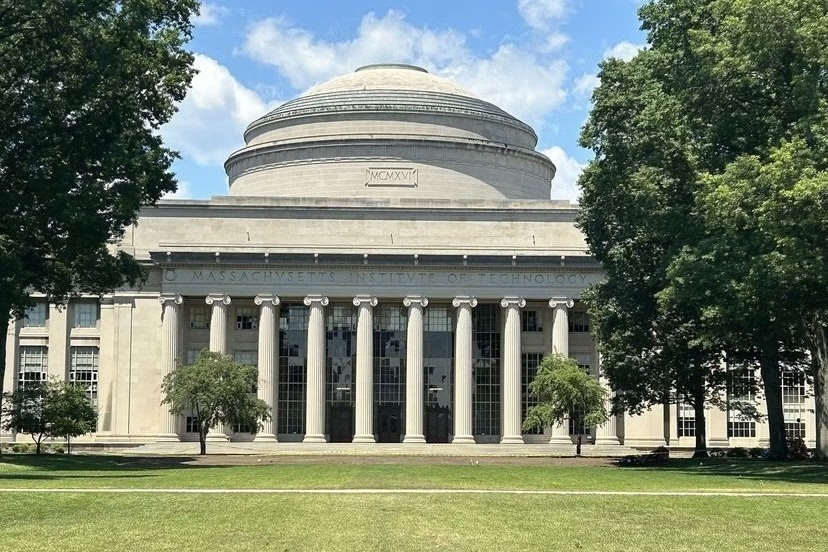What is it like to give birth on Mars? Can TikTok bioengineering stars win at the video game « Super Smash Brothers » while answering science questions? How do sheep, mouse, and human brains compare? These intriguing questions and more were explored last month when over 50,000 visitors from Cambridge, Massachusetts, and Greater Boston attended the MIT Museum’s annual Cambridge Science Festival. This week-long celebration of creativity, ingenuity, and innovation took place from Monday, September 23, to Sunday, September 29. The 2024 edition was the largest in its history, featuring a diverse program with over 300 events across more than 75 different locations, all free and open to the public.
Presented in partnership with the City of Cambridge and over 250 collaborators from Greater Boston, this year’s festival offered a wide range of interactive programs for adults, children, and families. These included workshops, demonstrations, keynote lectures, walking tours, professional networking opportunities, and expert panels. Aimed at both scientists and non-scientists, the festival also collaborated with several local schools to arrange an astronaut visit for middle and high school students.
Supported by dozens of local organizations, this was the first festival under the new leadership of Michael John Gorman, appointed as the director of the MIT Museum in January and who took office in July.
« A science festival like this has an incredible ability to bring together a wide range of people and ideas while showcasing Cambridge as an internationally recognized leader in science, technology, engineering, and mathematics, » says Gorman. « I am thrilled to have joined an institution that values producing events that foster such a sense of community, and I was delighted to see the enthusiastic response from the tens of thousands of people who attended and made the festival such a success. »
The Cambridge Science Festival 2024 had a broad reach, with events ranging from hands-on 3D printing demonstrations to concerts by the MIT Laptop Ensemble and participatory activities at the MIT Museum’s Maker Hub. This year’s programming also highlighted three carefully curated thematic tracks, each encompassing more than 25 associated events:
« For the Win: Games, Puzzles, and the Science of Play » (Thursday)
This track featured several evening events clustered around Kendall Square.
« Frontiers: A New Era of Space Exploration » (Friday and Saturday)
This track offered programs throughout Boston and was co-organized by The Space Consortium, organizers of Massachusetts Space Week.
« Electric Skin: Wearable Tech and the Future of Fashion » (Saturday)
This track included day and evening events at the intersection of science, fabric, and fashion, held at The Foundry and co-organized by Boston Fashion Week and Advanced Functional Fabrics of America.
One of the discussions related to the « For the Win » gaming-themed track involved artist Jeremy Couillard speaking with MIT Professor Mikael Jakobsson about the broader significance of games as a construct for encouraging interpersonal interaction and creating meaningful social spaces. Since last summer, the List Visual Arts Center has hosted Couillard’s first-ever institutional solo exhibition centered around « Escape from Lavender Island, » a dystopian third-person open-world exploration game he released in 2023 on the Steam video game platform.
For the space-themed « Frontiers » track, one of the standout events, « Is Anyone Out There? » addressed the latest cutting-edge research and theories related to the potential existence of extraterrestrial life. The panel of local astronomers and astrophysicists included Sara Seager, Class of 1941 Professor of Planetary Science, Professor of Physics, and Professor of Aeronautics and Astronautics at MIT; Kim Arcand, an expert in astronomical visualization at the Harvard-Smithsonian Center for Astrophysics; and Michael Hecht, a research scientist and associate director of research management at MIT’s Haystack Observatory. The researchers discussed the tools they and their peers use to search for extraterrestrial life and what discovering life beyond our planet could mean for humanity.
For the fashion-themed « Electric Skin » track, events covered a range of topics revolving around the role technology will play in the future of the field, including sold-out workshops where participants learned to laser-cut and design « structural garments. » A panel on generative technologies explored how designers are using AI to drive innovation in their businesses. Onur Yüce Gün, director of computational design at New Balance, also spoke on a panel with Ziyuan « Zoey » Zhu of IDEO, MIT Media Lab researcher and architect Behnaz Farahi, and Fiorenzo Omenetto, principal investigator and director of the Tufts Silk Lab and Frank C. Doble Professor of Engineering at Tufts University and professor in the Department of Biomedical Engineering and the Department of Physics at Tufts.
Beyond the three thematic tracks, the festival included an eclectic mix of events and interactive panels. The Cambridge Public Library hosted a « Science Story Slam » with high school students from 10 different states competing for $5,000 in cash prizes. Participants shared 5-minute stories about their adventures in STEM, with topics ranging from probability to « astro-agriculture. » The judges included several MIT faculty and staff members, as well as New York Times national correspondent Kate Zernike.
Elsewhere, MIT Museum’s Gorman moderated a discussion on AI and democracy featuring Audrey Tang, former Minister of Digital Affairs of Taiwan. The panelists explored how AI tools could combat the polarization of political discourse and increase participation in democratic processes, particularly for marginalized voices. Also at the MIT Museum, the McGovern Institute for Brain Research hosted a « Decoding the Brain » event with demonstrations involving real animal brains, while the Broad Institute of MIT and Harvard held a « Discovery After Dark » event to commemorate the institute’s 20th anniversary. Sunday’s Science Carnival featured over 100 demonstrations, events, and activities, including the popular « Robot Petting Zoo. »
When it launched in 2007, the Cambridge Science Festival was, in many ways, the first large-scale event of its kind to take place across the United States. Since then, similar festivals have sprung up across the country, including the World Science Festival in New York, the USA Science & Engineering Festival in Washington, the North Carolina Science Festival in Chapel Hill, and the San Diego Festival of Science and Engineering.
More information about the festival is available online, including opportunities to participate in next year’s events.



